There is something comforting about a hot bowl of soup on a cold winter day. I guess that’s why January has been named National Soup Month. In honor of this occasion, I thought it was high time to provide a guide to soups, which come in a wide variety of styles. In this article, I will discuss some of the more common variations of soup and offer information and tips on preparing, serving and storing homemade soups.
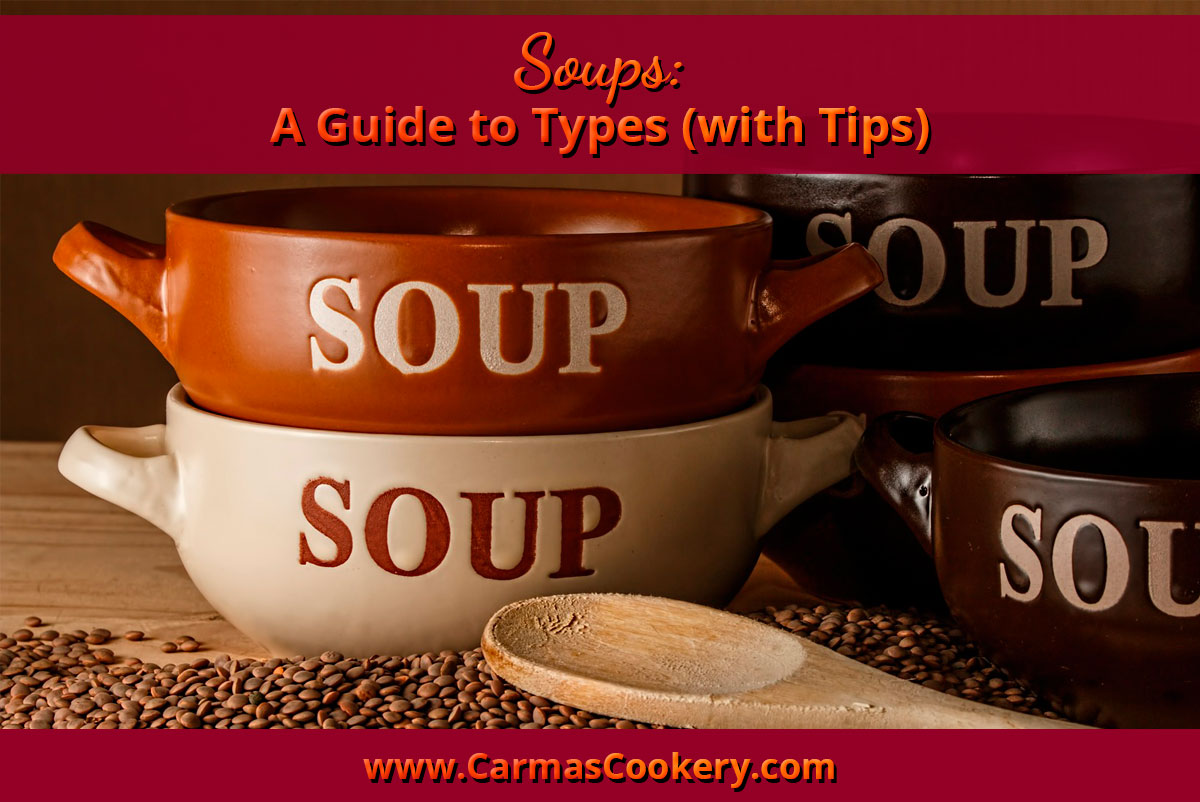
What is soup?
The term “soup” refers to any type of liquid dish served in a bowl or cup. It is typically made by boiling vegetables, meat and/or fish in water or stock. It can also be made from fruit. I can be served warm or cold. It can be the first course of a meal, or it can be the entire meal.
A Brief History of Soup
There is evidence that soup was made as early as the neolithic age. And people have been making soup ever since. If there was meat available, it is highly likely that soup was made of it. In fact, around 6000 BC hippopotamus was the common mean found in soup!
Soup has also often been associated with bread. People would either dip bread into the soup, or soup would be poured over pieces of bread. A favorite way I like to serve chicken soup is over chunks of bread with mint leaves sprinkled over them. The combination of mint and chicken broth is surprisingly delicious.
Stock vs. Broth
Most soups start with a broth or stock as their base. But is there a difference between the two?
In many ways, the two are virtually interchangeable. The biggest difference between the two is that broth has seasoning in it and stock does not. There are also some differences in ingredients and cook time.
[one_half] Stock …
… is made by simmering a combination of animal bones (which typically contain some scraps of meat), mirepoix (a mixture of onions, carrots, and celery), and aromatics in water.
… is always involves bones, although not necessarily meat.
… is cooked for anywhere from 2 to 6 hours on the stovetop.
… has a liquidy consistency, even when chilled.
… is always left unseasoned.
… is typically used for sauces, gravies, braises, stews, and soups, etc. [/one_half]
[one_half_last] Broth …
… is any liquid that has had meat cooked in it.
… is made by simmering meat (which can contain bones, but does not have to), mirepoix, and aromatics in water for a relatively short amount of time, usually under 2 hours.
… is typically seasoned.
… is a thin, flavorful liquid that often gels when chilled.
… is used in all the same ways as stock, including soups, sauces, and braises.
… because it’s seasoned, can be favorable enough to be consumed on its own. [/one_half_last]
Bouillon is another word for broth. You can purchase bouillon cubes or powder at your local grocery store, which simply needs water added to make a broth.
Soup vs Stew
The biggest difference between soup and stew is how much liquid the dish has. Soups have more liquid and smaller pieces of meat and/or vegetable. Stews are heartier and have larger chunks of meat and/or vegetable. So, basically, stew is a heartier form of soup.
What are the different types of soup?
There are several kinds of soup that have their own, specific term. Here is a quick guide to soup types:
Bisque
A thick, smooth, rich, creamy soup that is highly seasoned and usually made from seafood. It is fo French origin and was classically based on strained crustacean broth. Newer recipes may use poultry or vegetables in place of seafood. At one time bisques were thickened with rice, but today they are more frequently thickened with roux.
Examples:
Bouillabaisse
A traditional Provençal fish stew originating from the port city of Marseille. It is highly seasoned and made of fish, shellfish, onions, tomatoes, white wine, olive oil, garlic, saffron, and herbs. Here is a recipe from Saveur.
Chowder
A thick, creamy and chunky soup or stew usually containing seafood, potatoes, and milk or cream. The word “chowder” comes from the French word “cauldron,” which means cooking kettle. Vegetables or fish stewed in a cauldron became known as chowder in English-speaking nations (a corruption of the name of the kettle in which the dish was cooked). The first chowders prepared on the North American continent were brought by French fishermen to Canada.
Clam chowder is the most commonly known, which has several varieties: Boston/New England Clam Chowder, which has a cream base, and Manhattan Clam Chowder, which has a tomato base, and Rhode Island Clam Chowder, which has a clear fish broth base. However, there are other types of chowder, as well. One of my favorites is Corn Chowder.
Consomme
A clear broth, of French origin, that has been clarified, a process that uses egg whites to remove fat and sediment. I can be served hot or as a cold jelly. Saveur has a good recipe for making this broth.
Court Bouillon
A stock made from wine, vegetables, and herbs, often including an onion studded with whole cloves. It is typically used to poach fish, seafood or vegetables.
Cream Soup
Much like a bisque, a cream soup is creamy. They are typically thickened using a white sauce, which at its most basic is a sauce made from butter, flour, and milk.
Gazpacho
Unlike most soups, gazpacho is not cooked. This Spanish soup is made from a pureed mixture of fresh tomatoes, sweet bell peppers, onions, celery, cucumber, bread crumbs, garlic, olive oil, vinegar and sometimes lemon juice. It is served cold, and may also be served “chunky-style.”
Gumbo
This American soup comes from the south and is a traditional Cajun/Creole delicacy of South Louisiana. Just like the culture that created it, it has multi-cultural influences: wild game or seafood (from the Acadians, descendants of French colonists), thickened with okra (from the Africans), file (sassafras powder from the Indians) and/or roux (from the French). Gumbo is a thick, robust soup with numerous variations including chicken and sausage gumbo, shrimp and okra gumbo, oyster gumbo and seafood gumbo.
Minestrone
A thick, Italian soup containing assorted vegetables, peas and beans, pasta (such as vermicelli or macaroni) and herbs in a meat or vegetable broth. You can easily make vegetarian or vegan varieties of this soup.
How to Remove Fat from Soup
Because many of the ingredients that go into making a good soup have a fair amount of fat or grease, you’ll need to remove excess fat. This makes for a tastier — and healthier — soup. You can remove fat during cooking or before serving. Here are some techniques you can use to remove fat:
- Use a large spoon to skim the fat off soup as it simmers. I’ve found that metal or plastic spoons work better than wooden ones.
- While cooking soup, place the pot slightly to one side of the burner. The off-centered bubbling will encourage fat to accumulate on one side of the pot for easier removal.
- A leaf of lettuce dropped in a pot of soup will absorb grease from the top.
- To remove the last spots of fat floating on the surface, drag a clean, unprinted paper towel across the top. It will soak up most of the remaining oil.
- Refrigerate cooked stews and soups overnight before serving. The fat will rise and solidify in a layer at the top. The fat may then be removed by breaking it up into large pieces and lifting it away with a spoon.
- When in a hurry to skim the fat from soup, float an ice cube in the soup to help congeal the fat and make it easier to remove.
How to fix overly salty soup
It can happen to anyone — you put a bit too much salt in your soup. How do you fix that without ruining the other flavors you’ve so carefully crafted? Try one of these methods:
- Add a whole, peeled raw potato to the soup and simmer for 10 to 15 minutes. The potato will absorb the salt. Remove the potato before serving the soup. (There is no need to discard the potato — it is perfectly good for later use in another recipe.)
- Stir in 1 teaspoon of vinegar and 1 teaspoon of brown sugar for each quart of liquid. This is not a good idea, however, if you are watching your sugar intake.
How to thicken soup
The best method of thickening most soups and stews is to remove some of the cooked vegetables, puree them in a blender, and return the pureed mixture to the soup. To prevent from getting burned by splashes of hot puree, don’t fill the blender more than one-third at a time. These two recipes use this technique to create a cream soup texture:
If your soup doesn’t have many — or any — vegetables, you can try one of these techniques:
- Make a paste of all-purpose flour mixed with twice as much cold broth or water. The ratio of flour to liquid is 1-1/2 teaspoons of flour to 1 Tablespoon of liquid for every 1 cup of soup. Slowly stir the paste into simmering soup and continue to simmer for 5 to 10 minutes.
- A roux of butter and flour may also be used as a thickener (much like a white sauce). The longer the roux is cooked, the darker and more flavorful it becomes. Be careful not to scorch the roux or it will give the soup an unpleasant burned taste.
- Cream or half-and-half is another way to not only thicken but also add a sumptuous richness to your soup.
- A slurry made from 1 part cornstarch to 2 parts liquid will also thicken soup. Do not boil, or the solution will break down.
Freezing and Reheating Soup
Most soups freeze beautifully, so you can prepare a large batch and freeze to serve at a later date. Here are some basic steps for freezing and reheating soup:
- Chill soup in the refrigerator and skim off any fat that rises to the surface before freezing.
- Freezing cream-based soups may cause separation. If the soup does separate while reheating, whisk vigorously with a wire whisk or try blending it in a blender for a few minutes to smooth it out.
- Reheat frozen soups in the microwave or thaw at room temperature and heat in a heavy saucepan over low heat on the stovetop.
- To avoid overcooking starchy ingredients like potatoes, pasta, and rice, heat thawed soup only long enough to warm throughout.
More Soup Making Tips and Facts
Tips for serving soup
- A quart of soup will make six side dishes, or two main dishes.
- A hot soup will help recondition the palate between meal courses or after consumption of alcoholic beverages, so plan when you serve it accordingly.
Notes on cold soups
- Ideally, cold soups should be served in chilled dishes.
- Adjust seasonings of cold soups just before serving. Chilled foods tend to dull the taste buds and will require more seasoning than hot soups.
Tips for flavor
- Be aware that herbs will have a more intense flavor if added at the end of the long cooking process.
- Savory soups and stews always taste better if made a day or two in advance, refrigerated and then reheated just prior to serving.
- Wine is a wonderful flavor addition to soups and stews. When using wine in soup, use less salt as the wine tends to intensify saltiness. Wine should be added at a ratio of no more than 1/4 cup of wine to 1 quart of soup.
- Beer is also a good addition to soups and stews. A good rule of thumb is 1 cup of beer to 3 cups of soup.
- Freeze the liquids drained from canned mushrooms or vegetables for later use in soups or stews.
Cooking Tips
- Since liquids boil at a lower temperature at high altitudes, cooking time may need to be extended at altitudes above 2500 feet.
- Soups and stews should only simmer while cooking, never brought to a hard boil.
Final Comments About Soup
As with most dishes, the best soups are made with a base of homemade broth and fresh ingredients, however, this can be very time-consuming and labor-intensive. If you wish, time spent in the kitchen preparing soup may be reduced by using canned or frozen broths and vegetables while still yielding an excellent result.
Remember: There are no really good quick soup recipes because any truly good soup needs time during preparation for the flavor to fully develop. Always plan on providing enough time to prepare a really good soup or stew.
[divider]
References:
- Wikipedia
- The Dictionairy
- A 2005 article by Janice Faulk Duplantis
[divider]
[one_fifth] 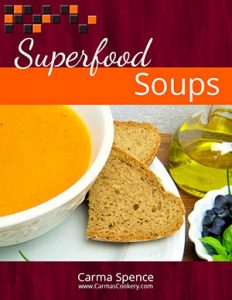 [/one_fifth]
[/one_fifth]
[four_fifth_last]
Want to make healthier soups?
Making sure your home-made soups have superfoods in them can really give a boost to their nutritional value. Download your copy of Superfood Soups today!
Learn More | Buy Now [/four_fifth_last]
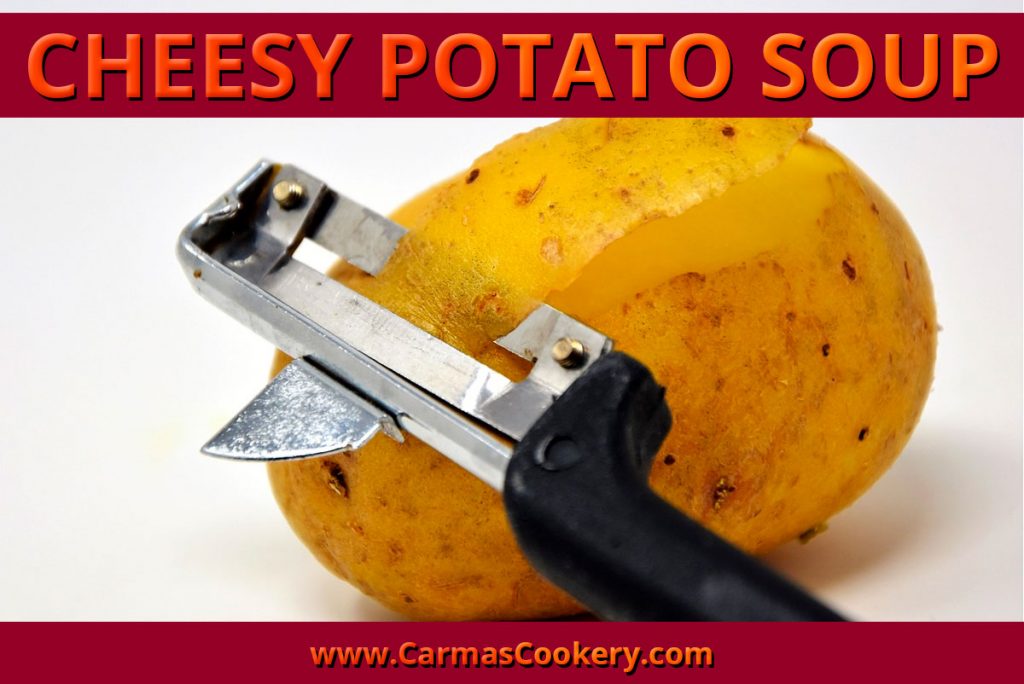




 [/one_fifth]
[/one_fifth]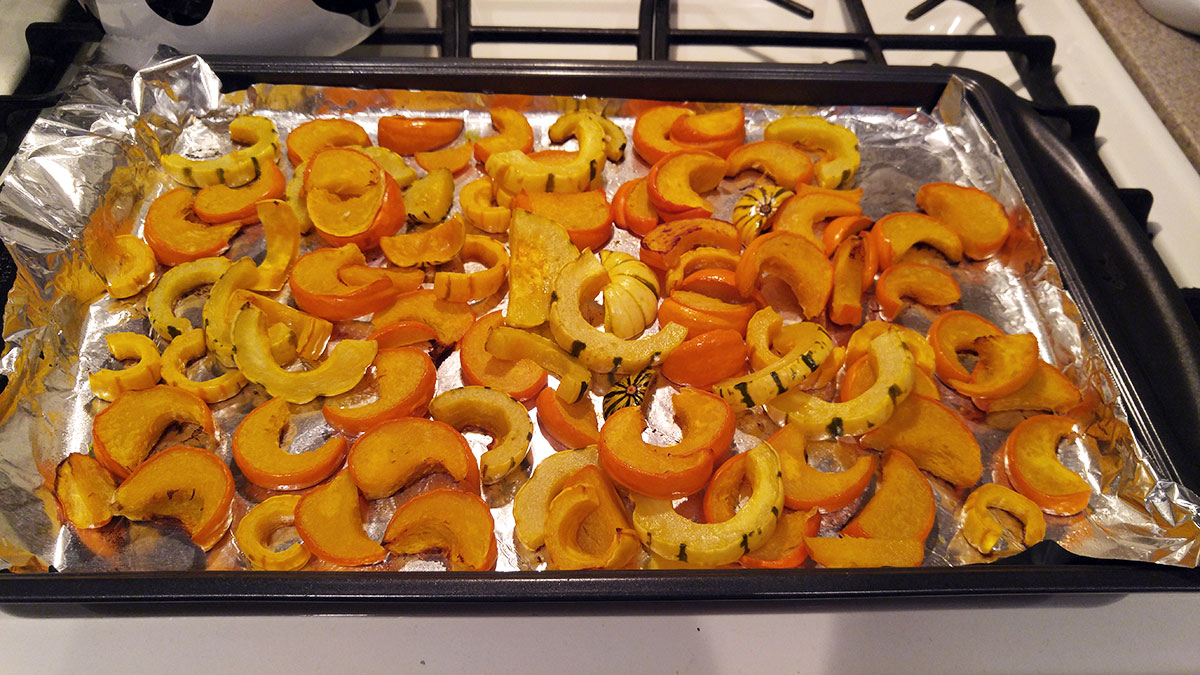
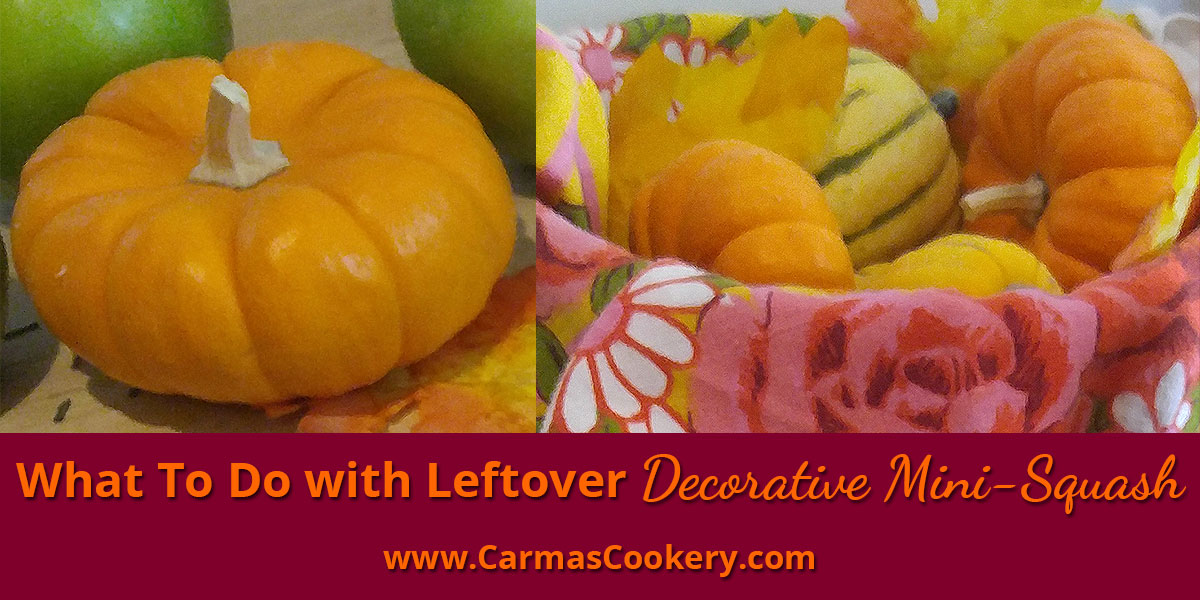
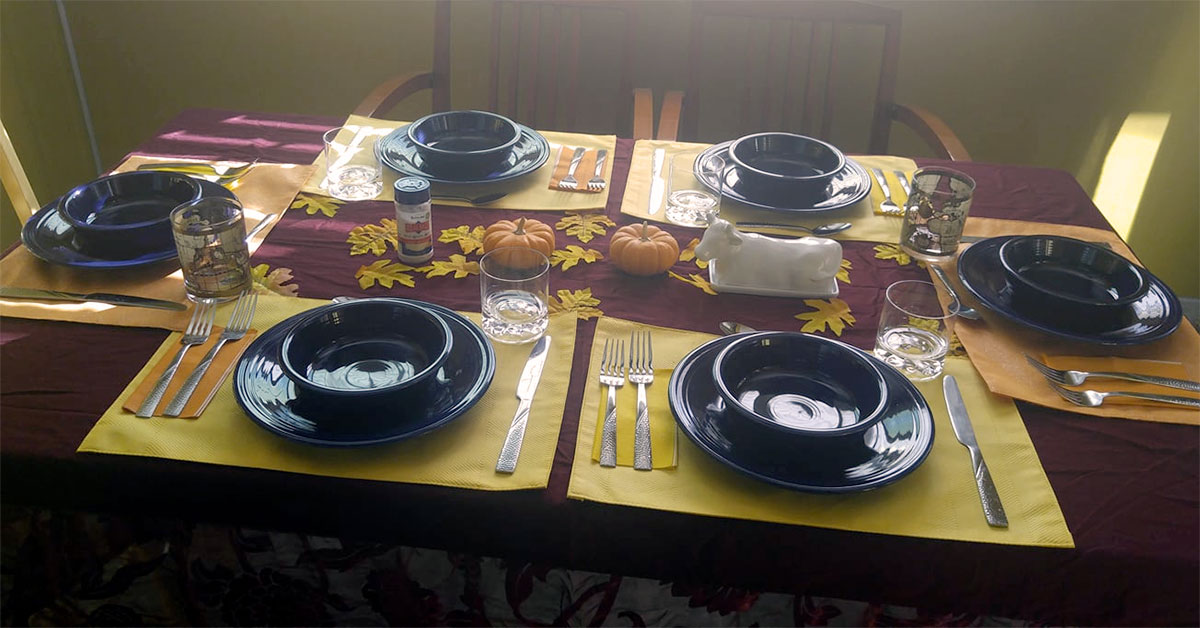
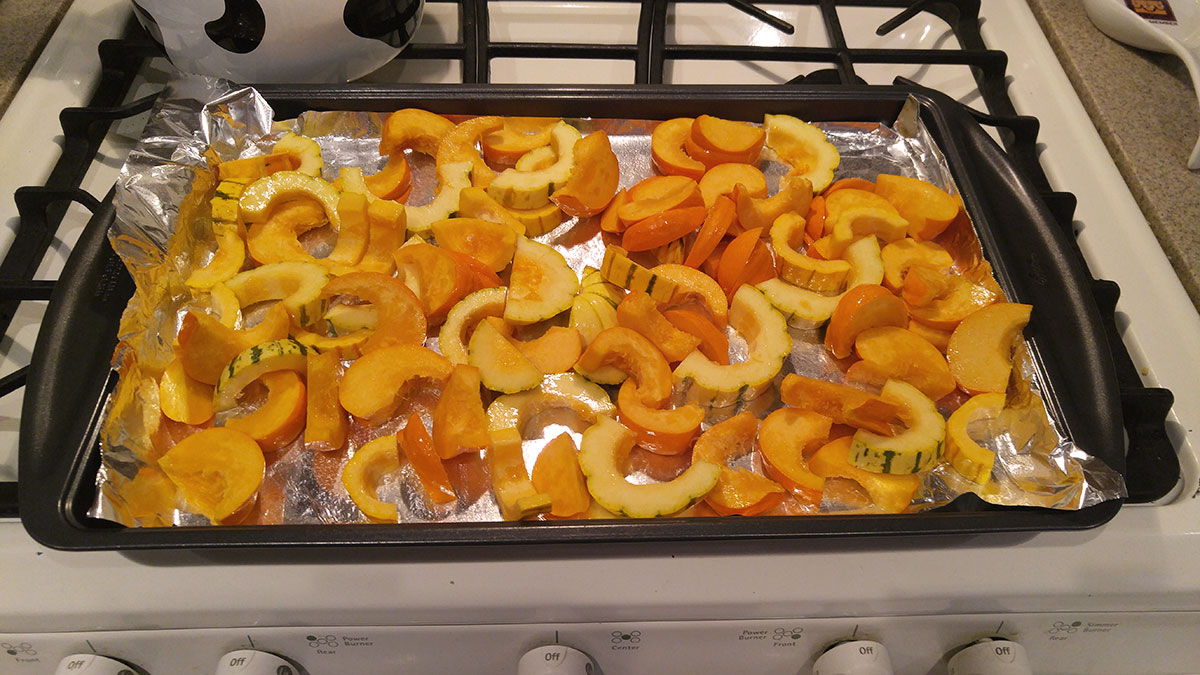
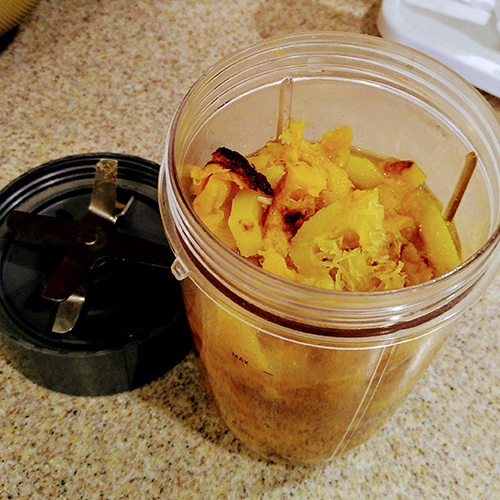
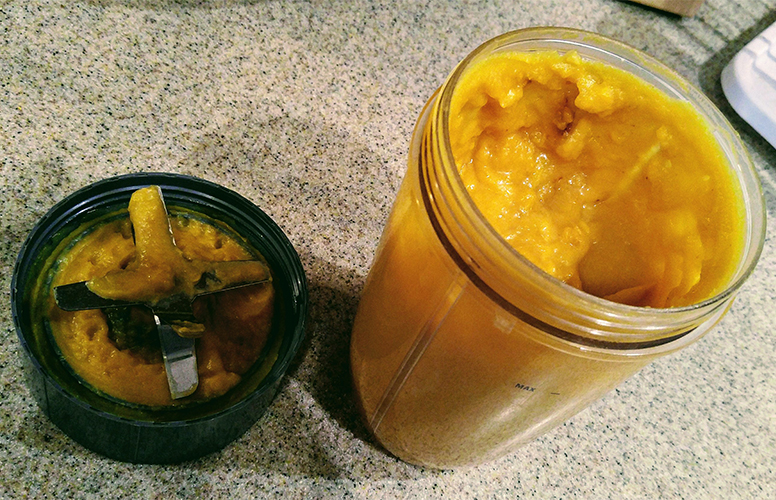
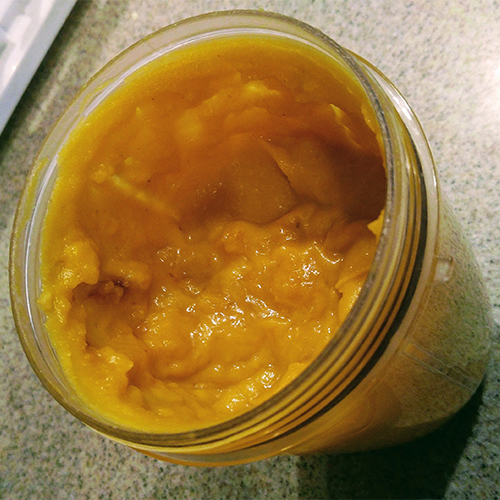
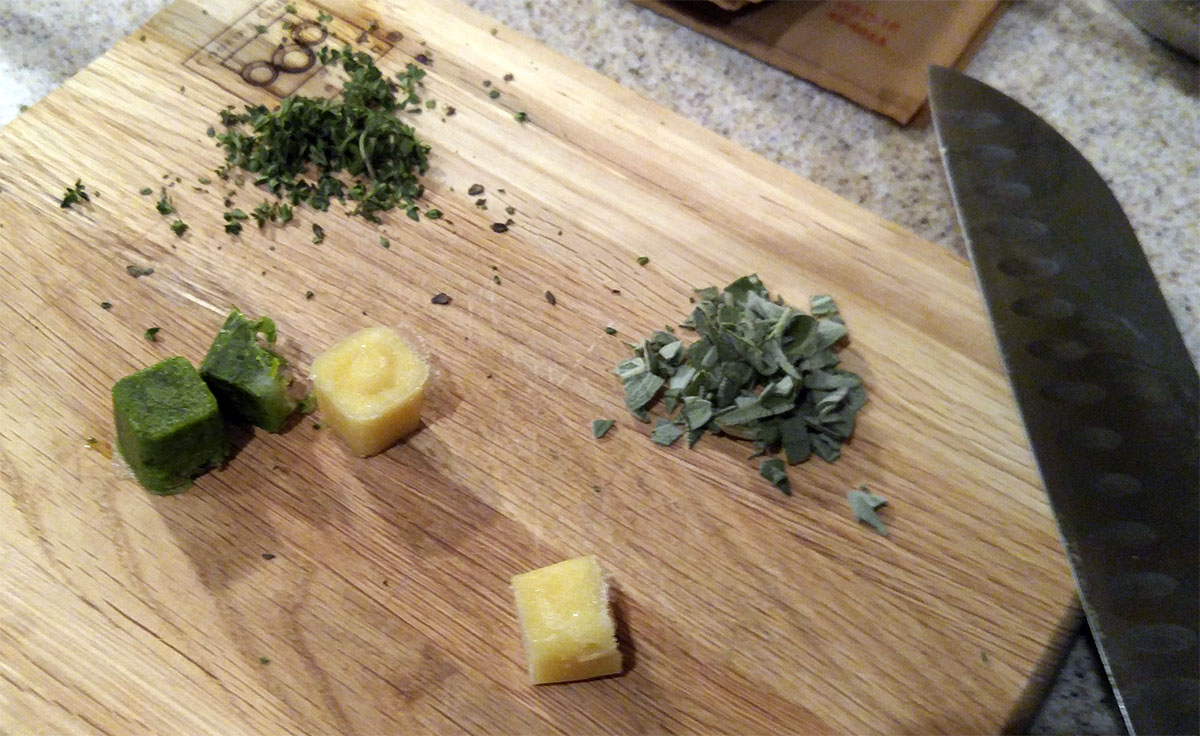
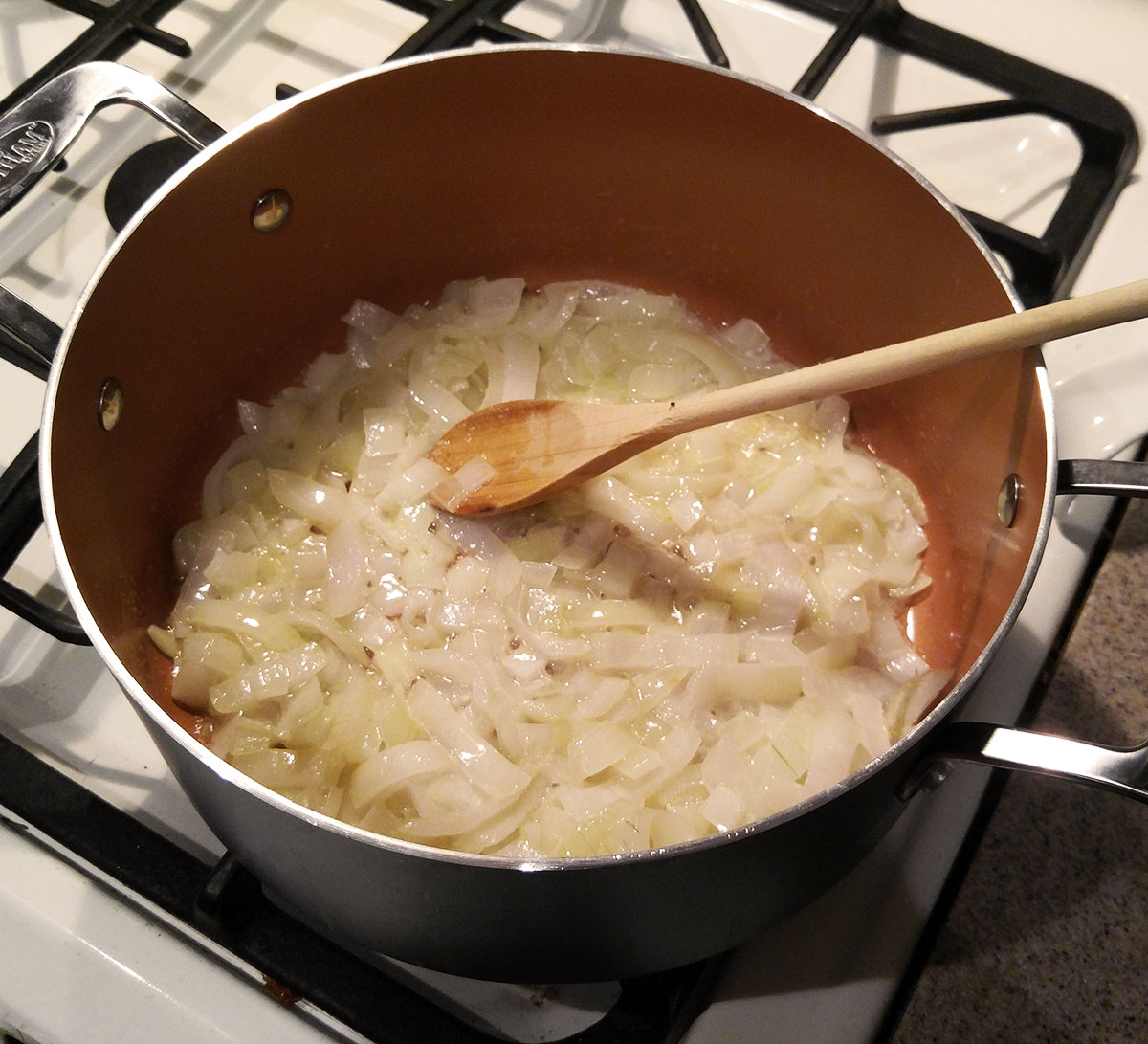
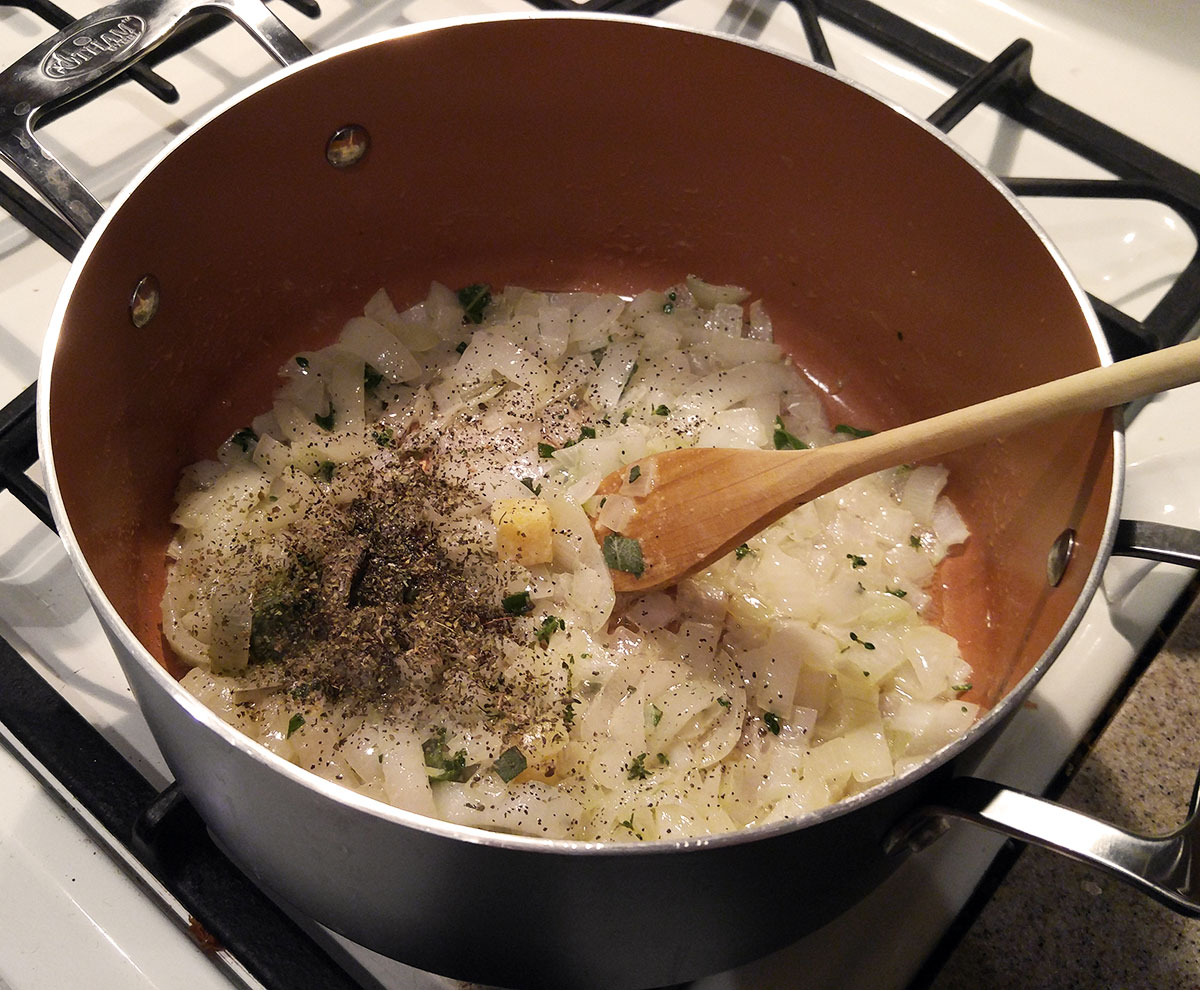
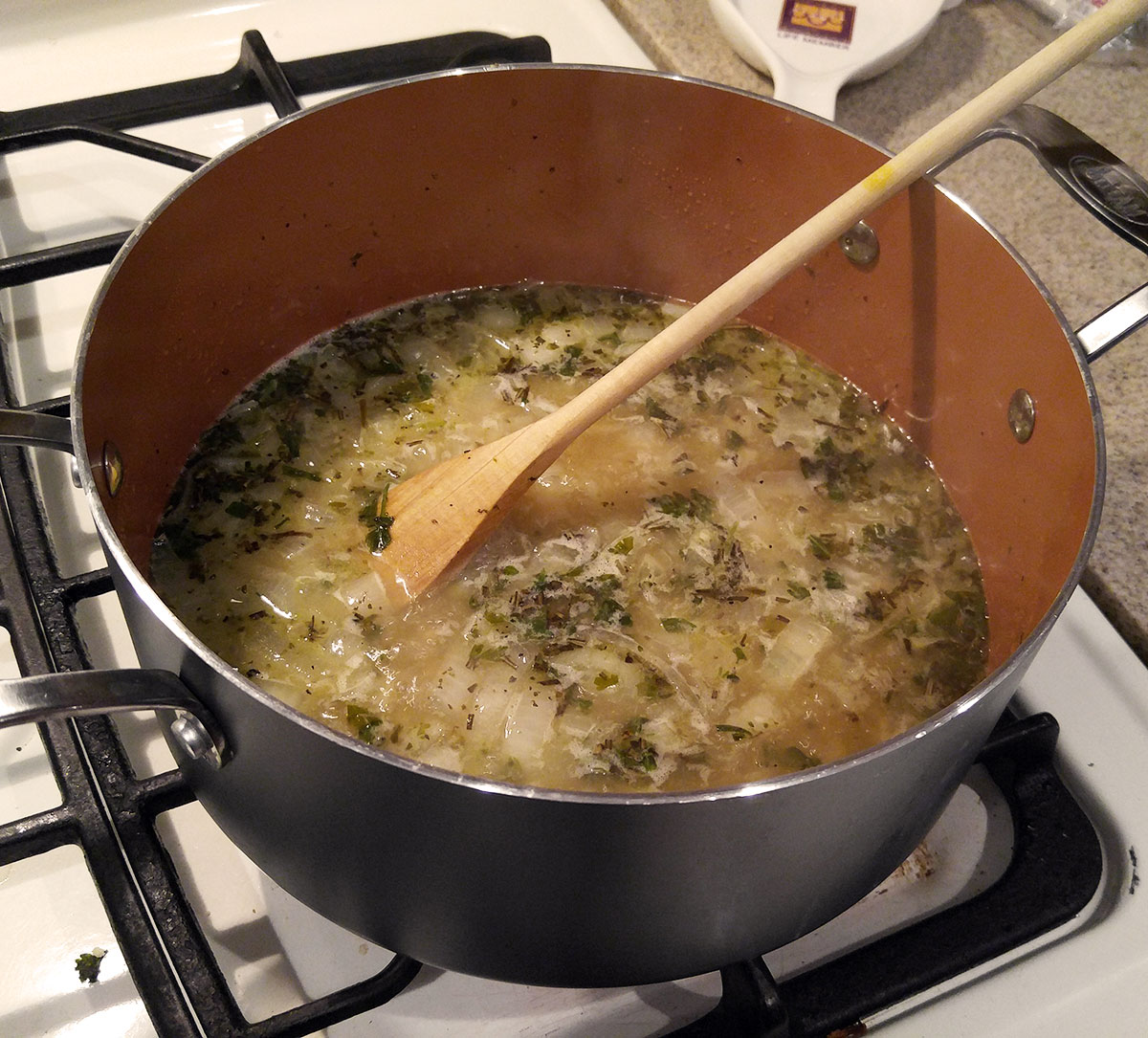
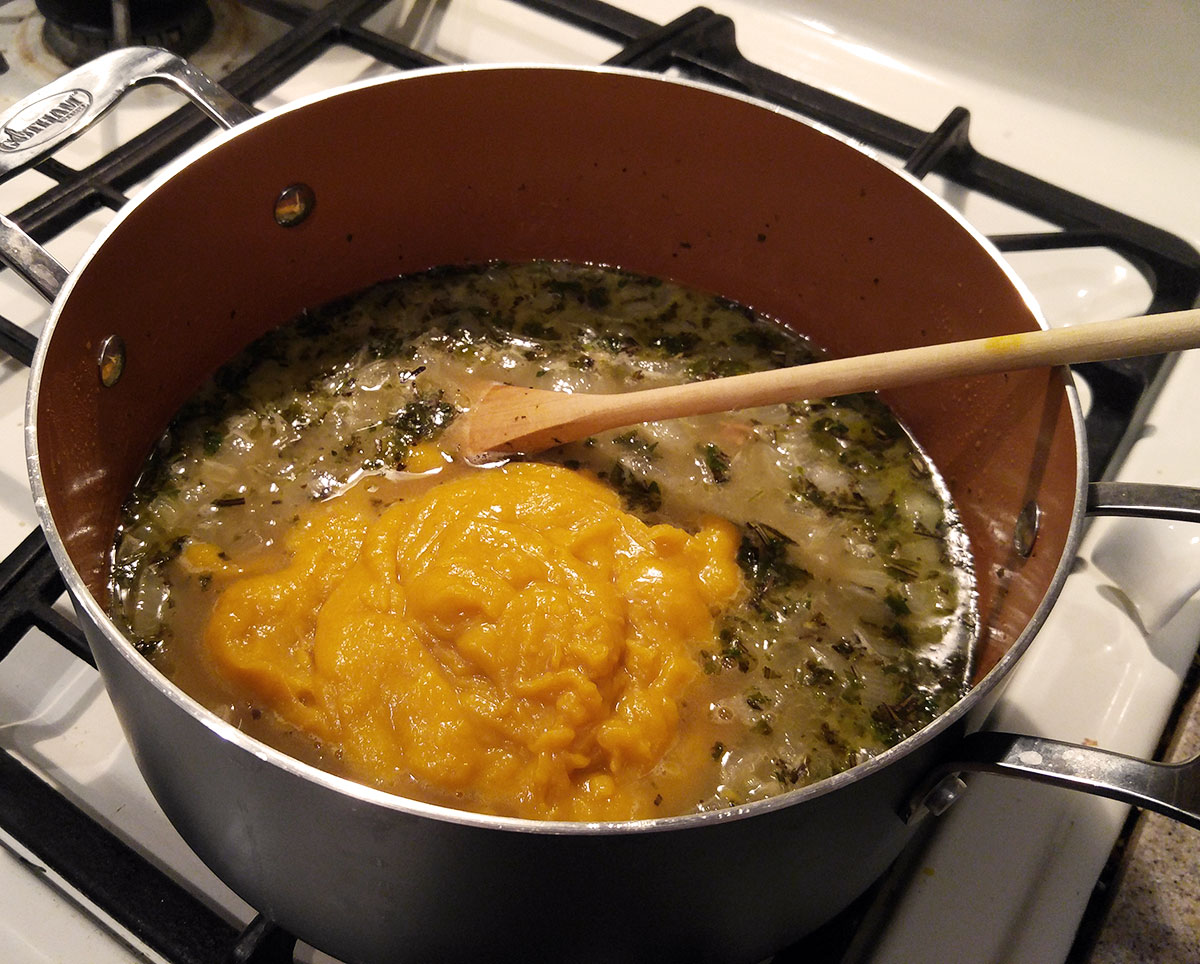
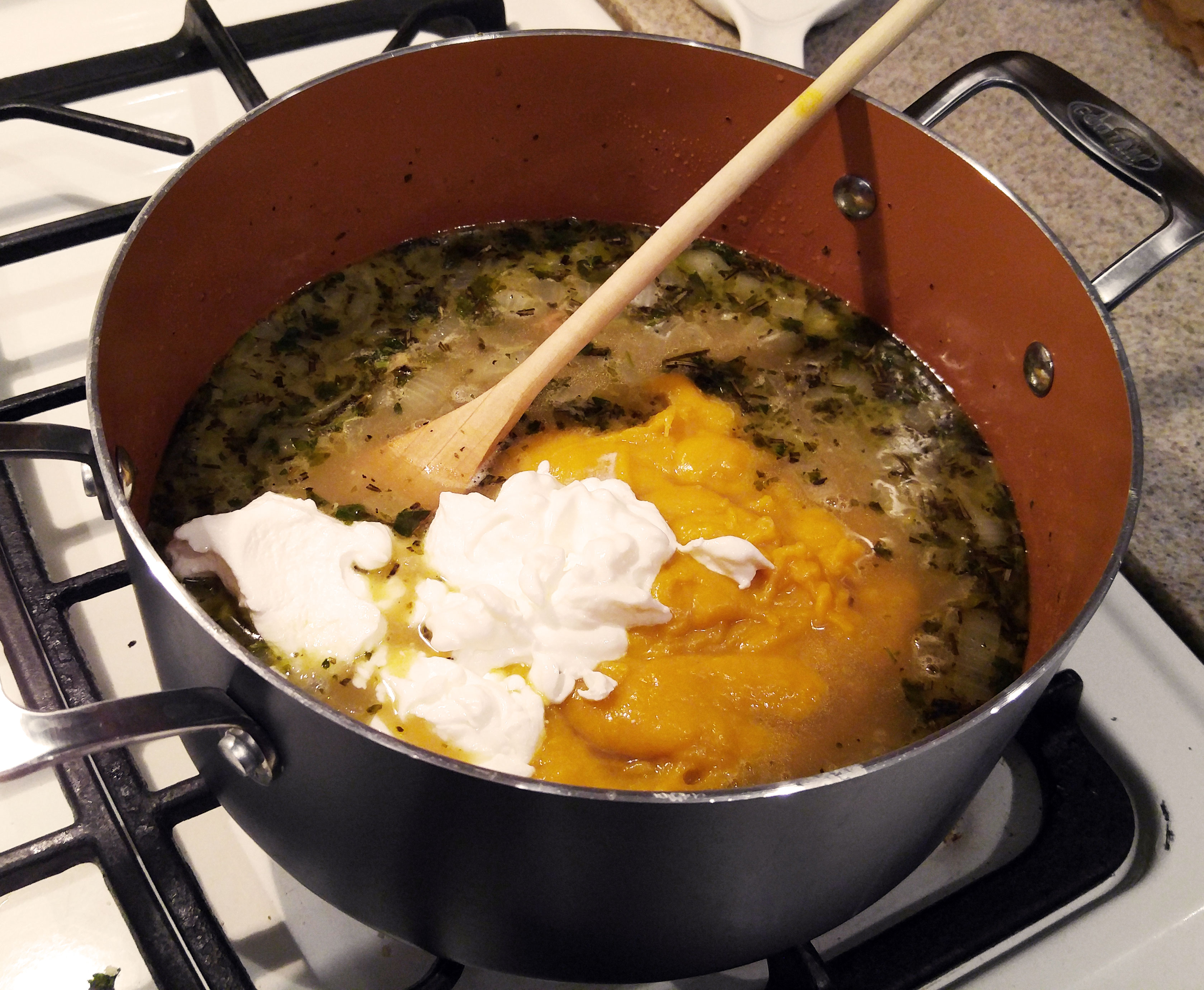
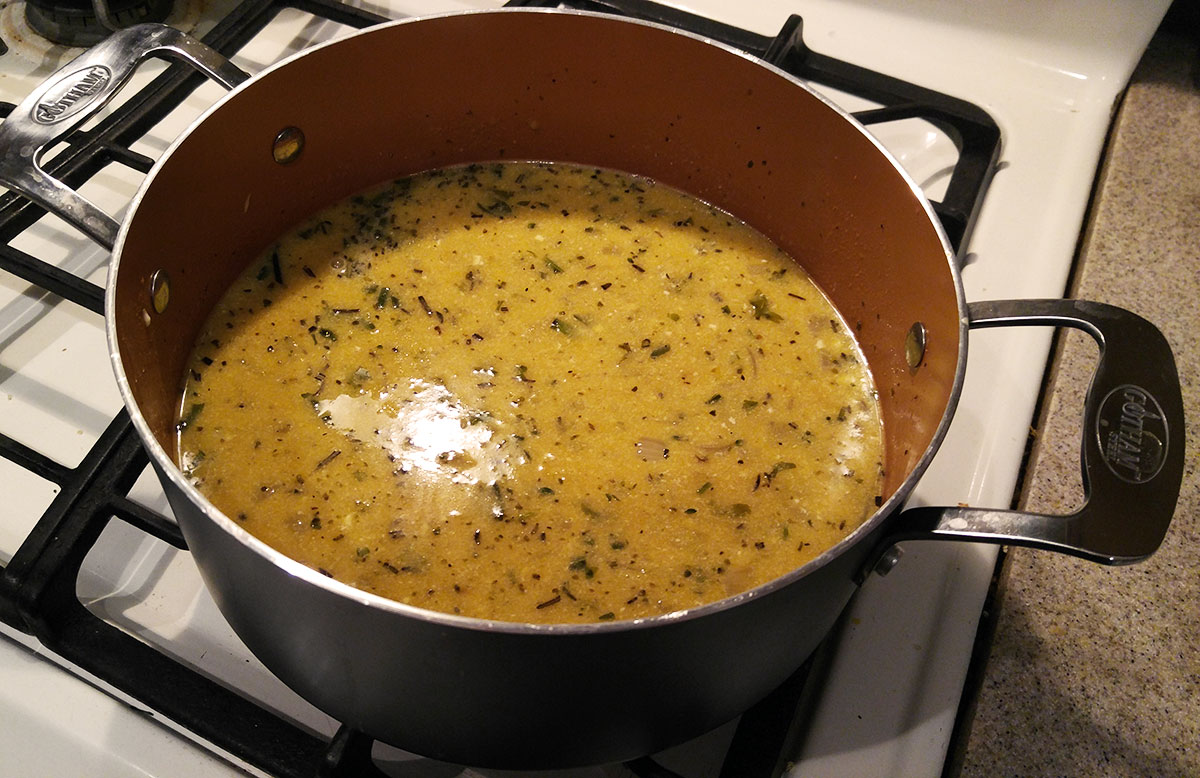
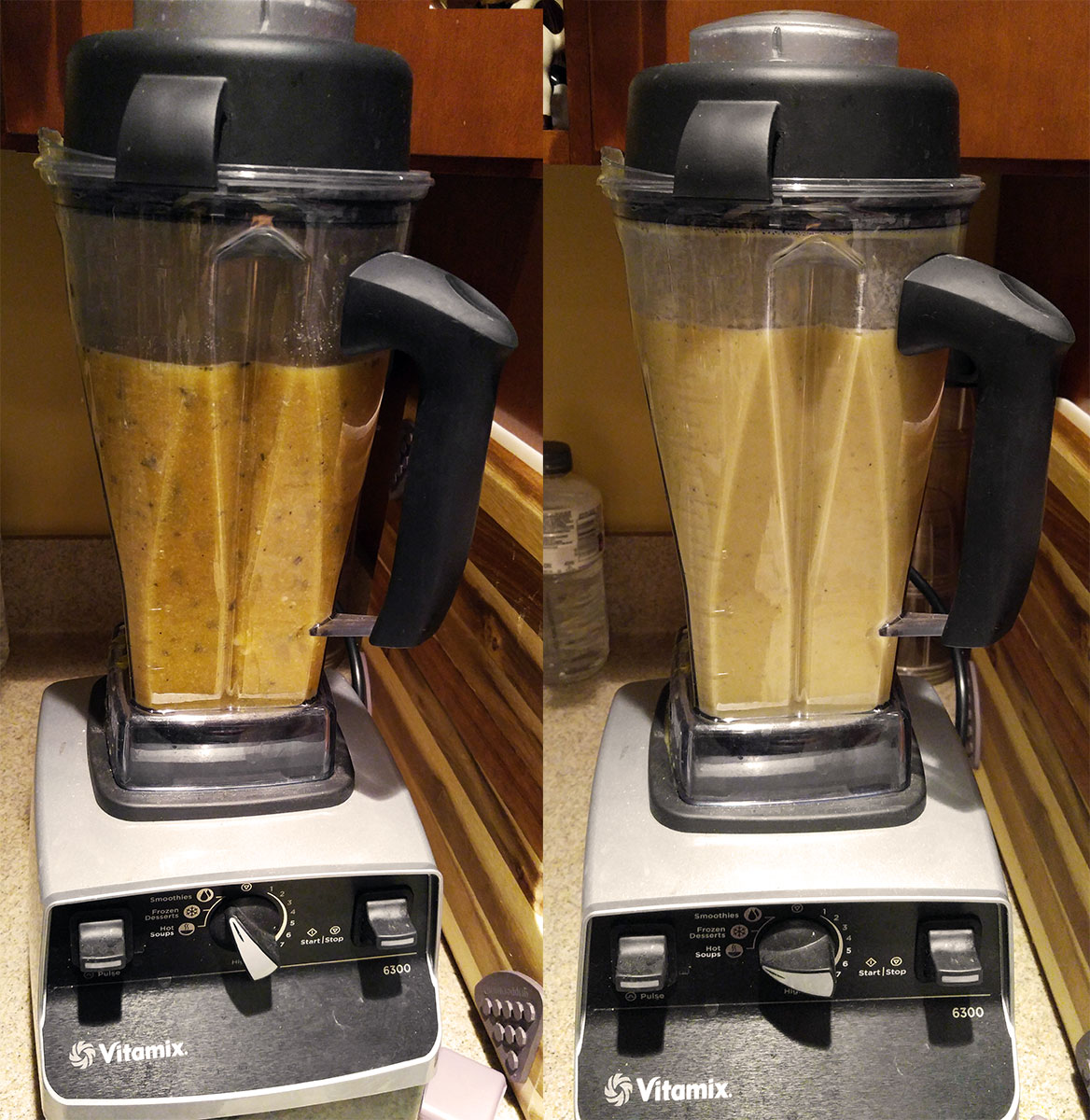
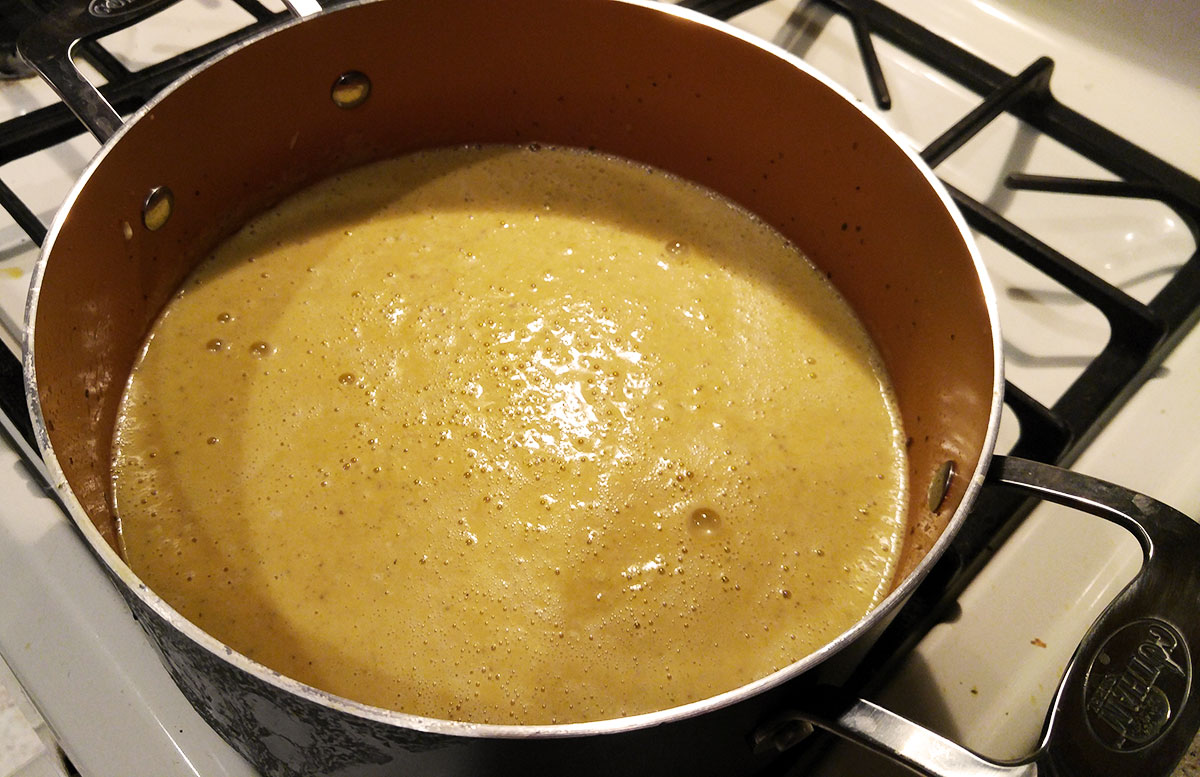
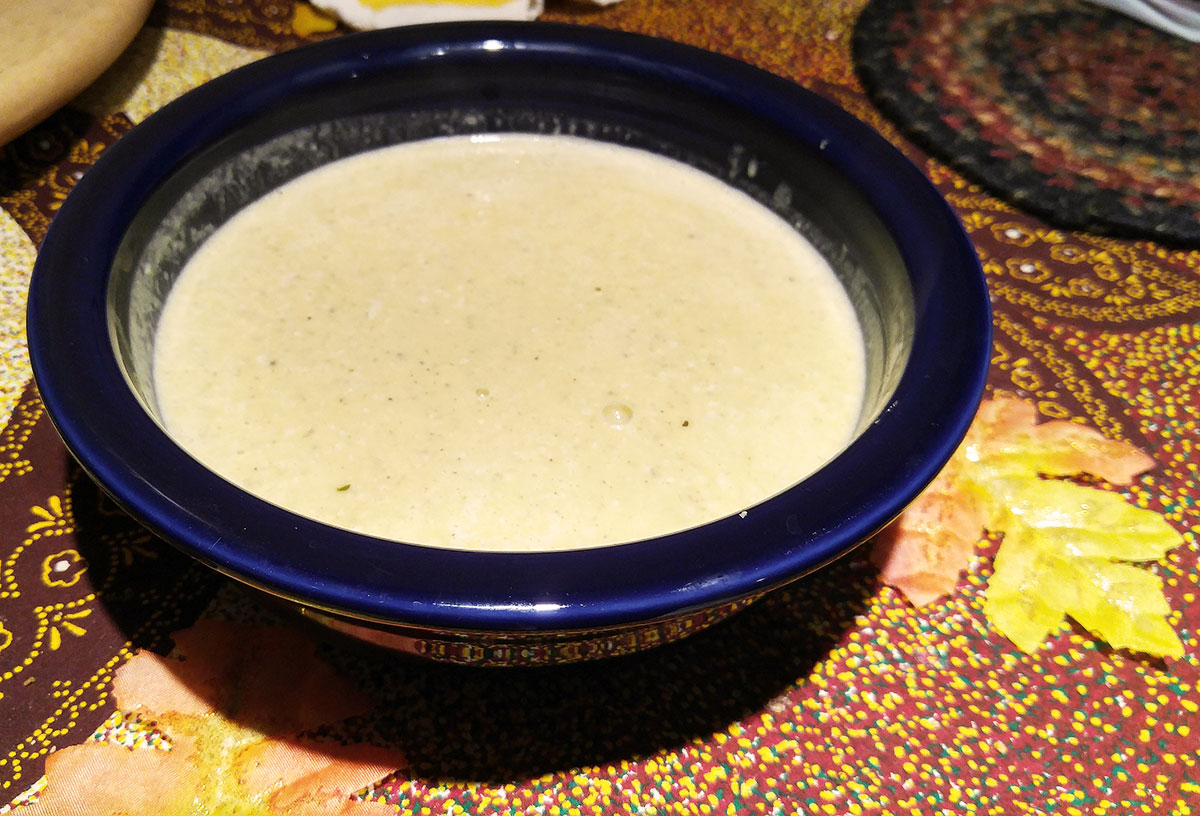

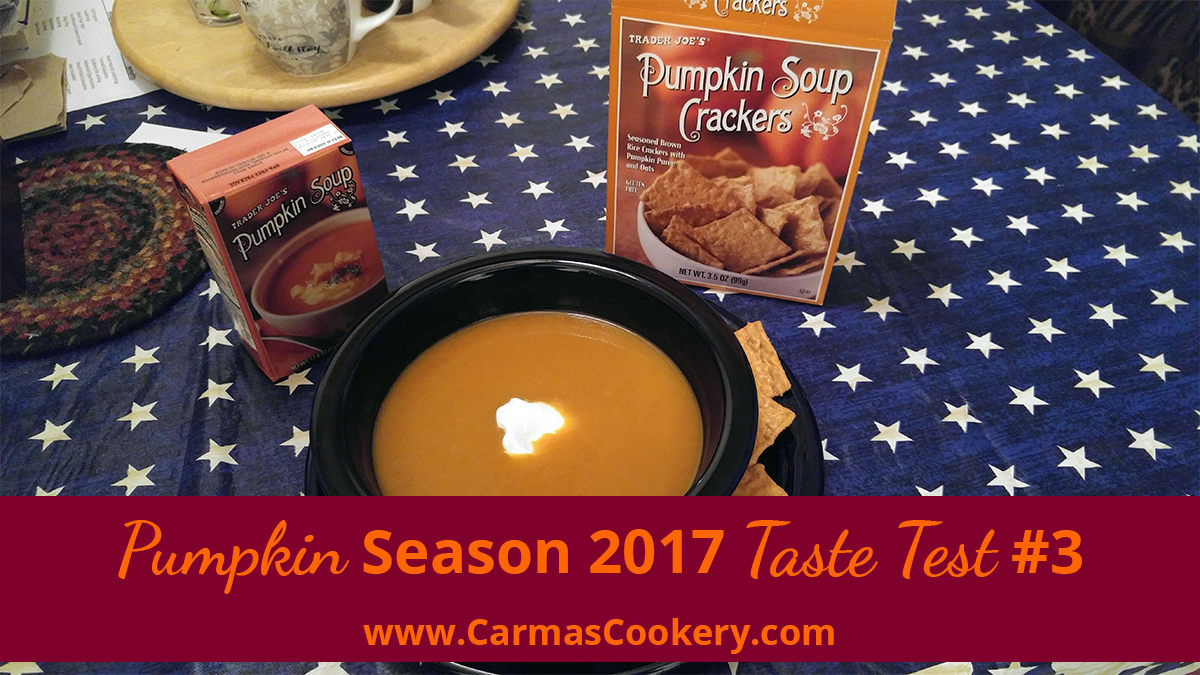
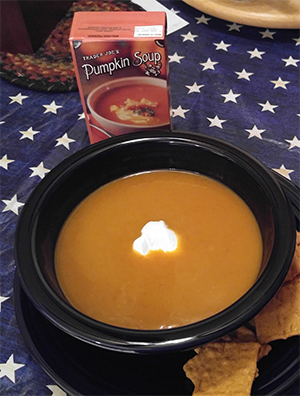 [/one_third_last]
[/one_third_last] [/one_fifth][one_fifth]
[/one_fifth][one_fifth] 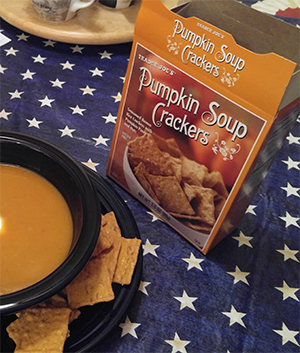 [/one_third_last]
[/one_third_last] [/one_fifth_last]
[/one_fifth_last]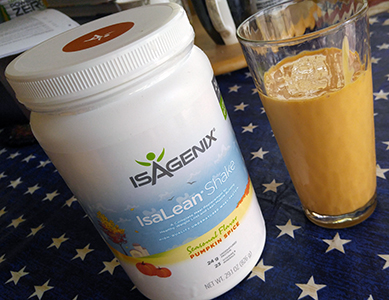 Through a Facebook friend, I found out about this one and had to buy it to add it to this series. I’ve had Isagenix shakes before and although pricey, they do taste pretty darn good.
Through a Facebook friend, I found out about this one and had to buy it to add it to this series. I’ve had Isagenix shakes before and although pricey, they do taste pretty darn good.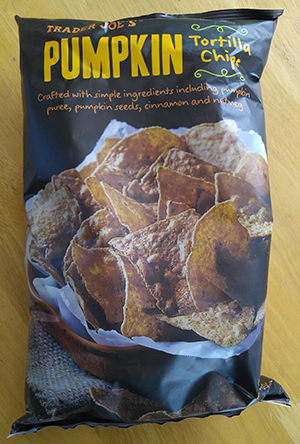 [/one_third_last]
[/one_third_last]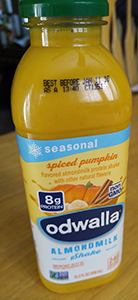 [/one_third_last]
[/one_third_last] [/one_third_last]
[/one_third_last]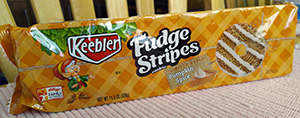 I’m going to preface this with that I’m not a big fan of Fudge Strip Cookies. I can take them or leave them, but I grabbed these because of the magic words “pumpkin spice.”
I’m going to preface this with that I’m not a big fan of Fudge Strip Cookies. I can take them or leave them, but I grabbed these because of the magic words “pumpkin spice.”